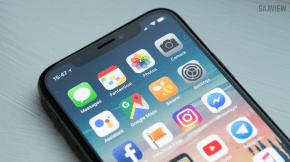The 5G expansion continues to grow rapidly in 2025, transforming how we connect, communicate, and interact with the digital world. As telecom companies invest heavily in infrastructure, 5G promises faster speeds, lower latency, and the ability to connect more devices simultaneously. As the global rollout progresses, let’s explore the key developments in 5G technology and its potential impact.
1. Global 5G Coverage Expands Rapidly
In 2025, the 5G expansion continues at an extraordinary pace. More countries and cities are adding 5G networks, increasing global access. By the end of the year, more than 60% of the world’s population will have access to 5G. This is a huge leap from just 10% in 2021. Notably, major telecom providers such as Verizon, AT&T, and Vodafone are expanding coverage to both urban centers and rural areas.
Interestingly, 5G expansion isn’t limited to developed countries. Emerging markets across Africa, Asia, and Latin America are quickly adopting this technology. This expansion is creating new opportunities for mobile connectivity and digital services. According to GSMA, 5G adoption is expected to exceed 1 billion users by the end of 2025, highlighting the accelerating pace of this transformation.
Key Benefits:
-
Faster speeds and reduced latency for a better mobile experience.
-
Greater connectivity in underserved regions.
-
Increased access to digital services and technology.
2. The Impact of 5G on Various Industries
The 5G expansion continues to have a profound impact across different sectors. Industries like healthcare, manufacturing, and automotive are experiencing rapid advancements, thanks to 5G’s reliable and low-latency connectivity.
-
Healthcare: 5G is enabling advancements in telemedicine. Now, high-definition video consultations and remote surgeries are possible with minimal delay. Additionally, IoT-powered healthcare devices can monitor patients in real time, offering more personalized and efficient care.
-
Manufacturing: 5G is fueling the growth of Industry 4.0. Smart factories now rely on 5G to connect millions of devices, boosting automation and real-time monitoring. As a result, production efficiency is improving, and costs are being reduced.
-
Automotive: In the automotive sector, 5G enables autonomous vehicles to communicate with each other and surrounding infrastructure. This significantly enhances the safety and reliability of self-driving cars.
The 5G network’s impact on industries is undeniable. For more details on these transformations, visit Ericsson’s 5G reports.
Key Benefits:
-
Real-time monitoring and remote control across industries.
-
Seamless integration of IoT devices.
-
Increased efficiency and innovation in manufacturing, healthcare, and transportation.
3. 5G’s Role in the Internet of Things (IoT)
As the 5G expansion continues, its impact on the Internet of Things (IoT) is becoming increasingly significant. 5G offers the ability to connect billions of devices seamlessly, enabling advanced smart cities and homes. Moreover, 5G’s ultra-low latency and massive bandwidth mean that more devices can operate simultaneously without performance degradation.
This technology is also crucial for advancements in smart grids and precision agriculture. For example, it allows for better energy management and improved crop yields through enhanced data collection. The IoT and 5G will work hand in hand to create smarter, more efficient solutions. For more information, visit Qualcomm’s 5G and IoT.
Key Benefits:
-
More reliable connectivity for billions of IoT devices.
-
New possibilities for smart cities, agriculture, and industries.
-
Real-time data collection and analysis for greater efficiency.
4. Enhanced Mobile Experiences with 5G
For consumers, the 5G expansion continues to enhance mobile experiences significantly. The faster speeds and lower latency of 5G make immersive technologies like augmented reality (AR) and virtual reality (VR) more accessible. These technologies are becoming more responsive, offering smoother, more interactive experiences.
In the entertainment sector, 5G is set to revolutionize streaming services. It will allow ultra-high-definition content to be delivered seamlessly, with reduced buffering and lag. Furthermore, gaming experiences will improve, with mobile games becoming more complex and requiring faster real-time processing.
Key Benefits:
-
Better streaming, gaming, and AR/VR experiences.
-
Ultra-high-quality video and gaming content for mobile users.
-
New formats for interactive media.
5. Addressing Security Challenges with 5G
While the 5G expansion continues, new security challenges have emerged. As more devices connect to the network, the potential for cyber-attacks increases. Therefore, securing 5G networks has become a priority for telecom companies and governments.
To address these concerns, telecom operators are heavily investing in advanced encryption methods and AI-driven security solutions. This will help protect the vast amount of data traveling across 5G networks. Nokia has been leading efforts to develop these security solutions, ensuring the integrity of the network as 5G adoption increases.
Key Benefits:
-
Investment in secure 5G networks.
-
Enhanced encryption and threat detection using AI.
-
Stronger defenses against cyber threats.
Conclusion: 5G Expansion Continues in 2025
As we reach 2025, the 5G expansion continues to reshape industries, improve mobile experiences, and enable the growth of IoT devices. The next few years will be crucial as 5G becomes more integrated into daily life, driving digital transformation. As global adoption increases, new applications will emerge, changing the way we live and work.
For consumers, businesses, and governments, understanding and adopting 5G is essential. The future of connectivity is here, and it’s changing fast.
















